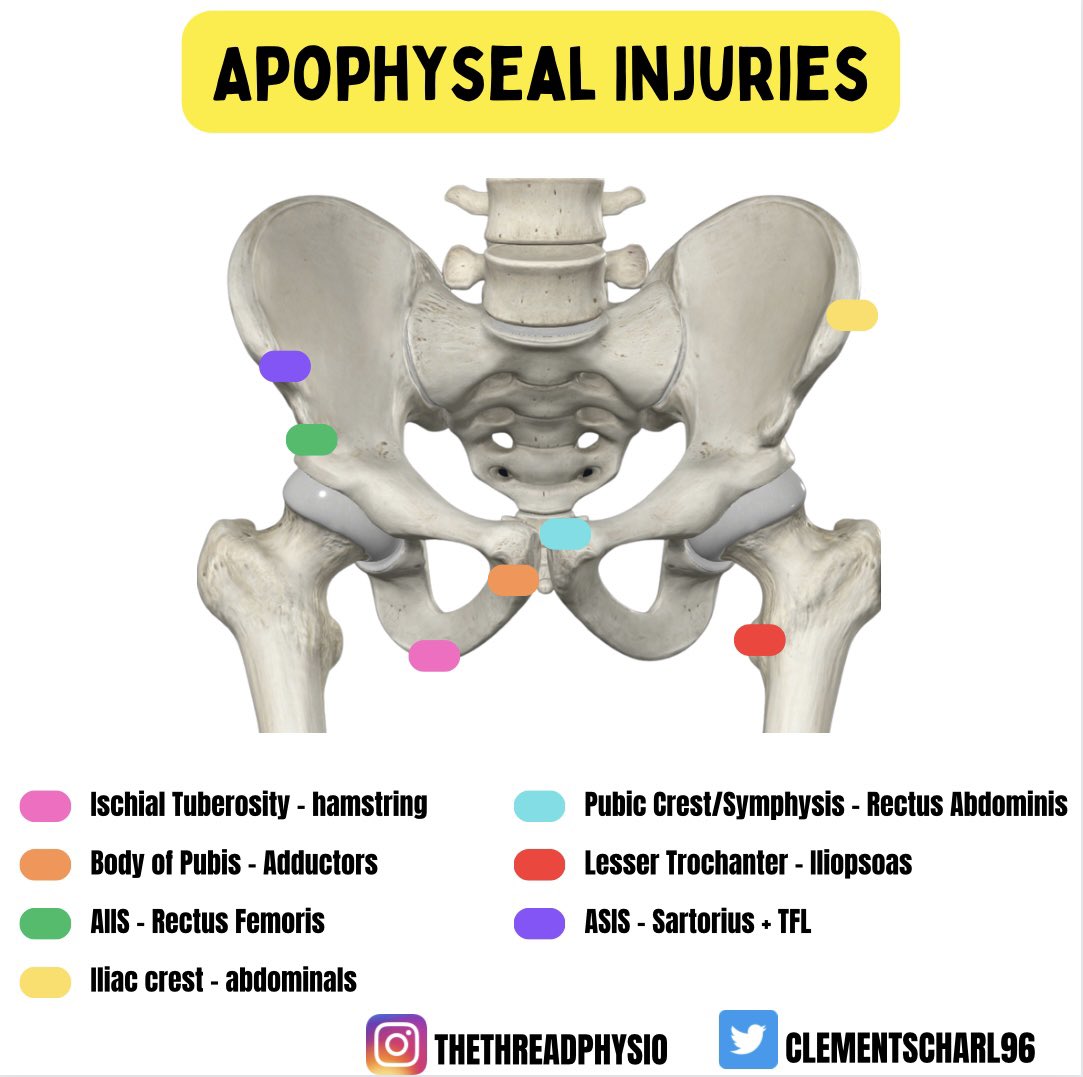
First Contact Physiotherapist | Instagram 📸 THETHREADPHYSIO | Passionate about CPD 🧠
2 subscribers
How to get URL link on X (Twitter) App


 2) They account for approx 3-5% of adolescent injuries involve the groin (Di Maria et al., 2022). Avulsion fractures typically occur w forceful contraction +/- passive stretching & this is due to secondary ossification centres being weaker than the MTU
2) They account for approx 3-5% of adolescent injuries involve the groin (Di Maria et al., 2022). Avulsion fractures typically occur w forceful contraction +/- passive stretching & this is due to secondary ossification centres being weaker than the MTU




 2) PADs is a vascular pathology whereby an inadequate amount of oxygenated blood is transported to the LL due to atherosclerosis & stenosis/occlusion of arterials supplying the tissue
2) PADs is a vascular pathology whereby an inadequate amount of oxygenated blood is transported to the LL due to atherosclerosis & stenosis/occlusion of arterials supplying the tissue


 2) Back pain & it’s types
2) Back pain & it’s types 

 2) It is the 3rd most common entrapment neuropathy in the body & the most prevalent for the LL.
2) It is the 3rd most common entrapment neuropathy in the body & the most prevalent for the LL. 


